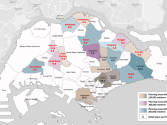Thought Leadership Centre
Most Read
1. Singapore's EMA and JERA forge partnership to strengthen LNG supply chain 2. Malaysia launches platform for RE cross-border sale to Singapore 3. NUS institute partners with Rockefeller Foundation to boost SEA energy shift 4. Australia launches largest renewable energy tender 5. ASEAN could save $800b in decarbonisation costs with regional cooperationResource Center
Awards
Oct
22
Oct
22
Oct
22
Event News
Event News
Abu Dhabi Sustainable Water Solutions clinches two wins at Asian Water Awards
Co-Written / Partner
The project meets the long-term needs of the people for the collection and recycling of wastewater.
Co-Written / Partner
Abu Dhabi Sustainable Water Solutions clinches two wins at Asian Water Awards
The project meets the long-term needs of the people for the collection and recycling of wastewater.
Videos
Partner Sites
Join the community
Thought Leadership Centre
Most Read
1. Singapore's EMA and JERA forge partnership to strengthen LNG supply chain 2. Malaysia launches platform for RE cross-border sale to Singapore 3. NUS institute partners with Rockefeller Foundation to boost SEA energy shift 4. Australia launches largest renewable energy tender 5. ASEAN could save $800b in decarbonisation costs with regional cooperationAwards
Oct
22
Oct
22
Oct
22

 Advertise
Advertise




















Commentary
Data monitoring practices key to emerging Taiwanese offshore opportunities
Data monitoring practices key to emerging Taiwanese offshore opportunities
Southeast Asian power companies are seizing renewable opportunities
How Asia can get its energy transition right
Vietnam bets on solar auctions to develop its renewable energy market
The buzz about lithium-ion batteries
Vietnam's Solar FIT 2 and Overcoming Financing Challenges
Unlocking the potential of solar water solutions
Taiwan Offshore Wind Series Part 2 — "Lessons Learned"
Taiwan Offshore Wind Series Part 1 – Allocation of Offshore Windfarms in Taiwan
Pakistan's energy pathway under the spotlight
Retailer's exit from Singapore's electricity market: No need for warning bells
Moving towards renewable and sustainable energy in Sri Lanka: an uphill battle?
Hong Kong is catching up with other APAC markets to embrace sustainability
Chinese wind turbine manufacturers are poised to overtake their European counterparts
Taiwan's referendum on nuclear and feed-in tariff reductions – Implications for investors
Indonesia's approach to Waste-to-Energy
A riddle wrapped up in an enigma— Why can't Indonesia get the power sector right?